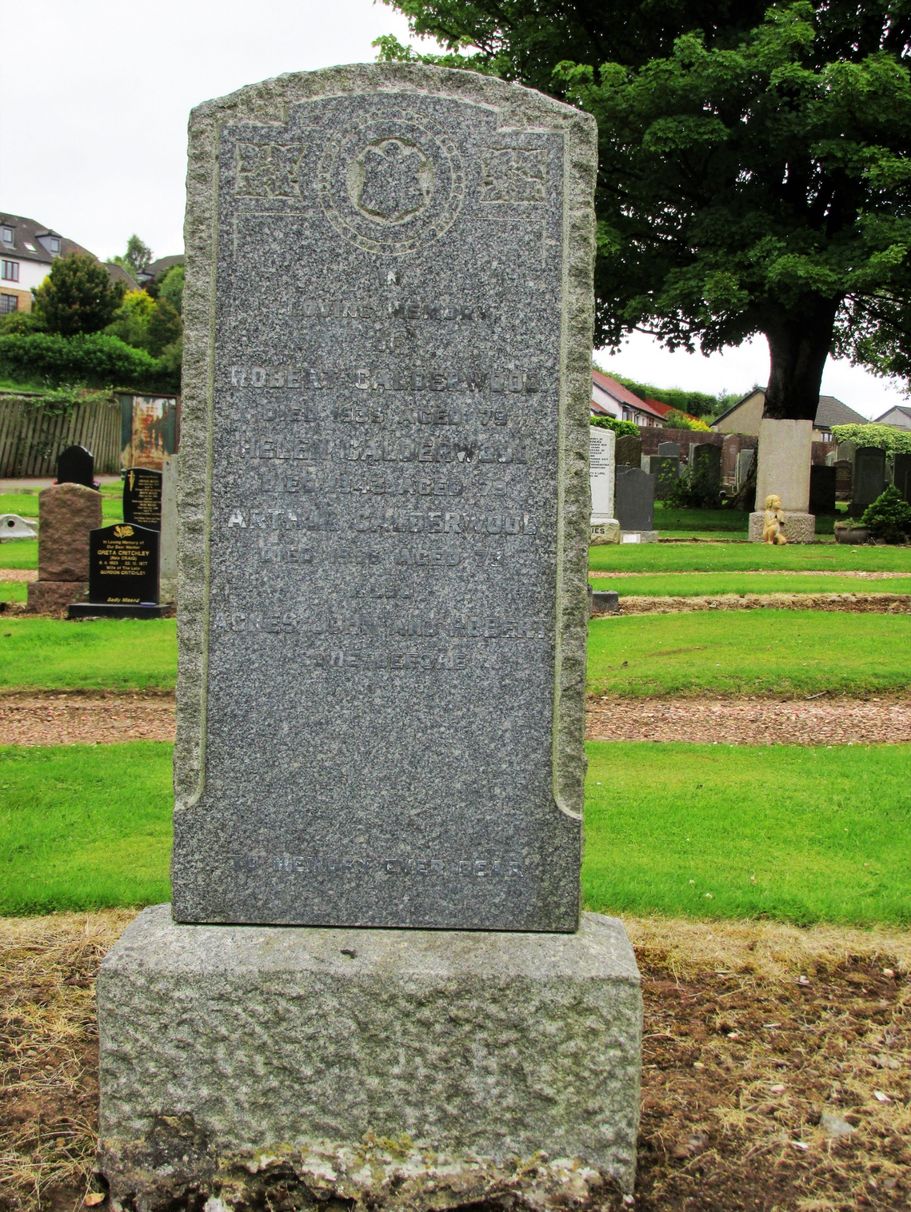Robert "Bobby" Calderwood
Bobby Calderwood was, perhaps still is, a player of some mystery. There was no picture of him, no precise birth-date, although c. 1860 is quoted, probably erroneously, nor a fully identifiable death notice and, ostensibly at least, only a short playing record. But it is one that includes international selection and impact. In a trio of matches against the three other home nations in 1885 he from the left-wing at centre-forward scored three goals. And he did it as a Cartvale player; it being a club based in the Renfrewshire village of Busby with its dye-works fed by the waters of the White Cart; and one, which would contemporaneously spawn another international, Mick Dunbar, and Brazilian footballing pioneer, Tommy Donohoe. Born again in Busby in 1863 Donohoe was said as a youngster to have featured at centre-forward in the same Cartvale team as wingers Calderwood and Dunbar only in 1891 to take himself, his dyeing skills and his obvious passion for the game, their game, to South America never to return.
And it is precisely Busby that remains the best clue to greater identification of Calderwood, his probable, actual birth-date and greater detail of his death. A Robert Calderwood was born in Busby, but in 1862 not 1860. His father was a locally-born labourer. He himself at eighteen was already working as the same in the local print-field. Moreover in 1883 he was married to village-girl, Helen Murray, have his, their seven children there or thereabouts, would die there in 1939 and be recorded there in 1871, 1881, 1901, 1911 and 1921 but notably not 1891, with football the explanation.
Andy Mitchell has him as a late teenager with Cartvale for three seasons, then in 1882-3 having a season with Paisley Athletic, at the time described as the "premier club" in the town. But he was to return to his village team for three years, including international selection, until moving with Mick Dunbar to north Glasgow and Cowlairs and it would be from there that in 1887 he too was tempted south, not to South America but Liverpool, with Bootle and potentially Andrew Watson. However, he never featured for the Merseyside club, seemingly simply disappearing. Except that the actual story is now known. Again Andy Mitchell has found that he lasted only three days down south, returning home but, having taken the English shilling, only to be handed a two-year ban by the SFA for professionalism. It was a ban he served out before in 1889-90 turning out for Cowlairs once more. And it would be followed by a second professional dalliance for the 1890-91 season, but no census registration, again in England, this time at Newcastle West End, then rapid reinstatement as an amateur and a return to Glasgow to Thistle FC and in 1892, aged almost thirty, back to Cartvale for two more seasons.

So it was that at thirty-one our Calderwood retired from playing, merging into his home-locality. He became Cartvale's Secretary and at thirty-nine and again fifty, having seemingly gained a couple of years en-route, perhaps the source of birthdate confusion, perhaps football related, was, like his father, a labourer in his home-village. At sixty he was a brickie's labourer living in the same street as had the Donohoes. And at seventy-seven he was probably buried in the Mearns Cemetery in Newton Mearns, to be reunited with his wife, a Helen, just four years later in 1943. The proviso is that the grave-stone that should give his birth-year as 1862 seems once more to indicate 1860.
Birth Locator:
Russel's Land, Main St., Busby, Renfrewshire
Residence Locator(s):
1871 - Russell's Land, Mearns (Main St., Busby)
1881 - Russell's Land, Mearns (Main St., Busby)
1891 - N/A
1901 - Wylie's Land, Busby
1911 - 91, Burnside (now Riverside) Terrace, Busby
1921 - 3, Burnside (now Riverside) Terrace, Busby
1939 - Bon Accord Cottages, Busby, Lanarkshire
Death Locator
1939 - Bon Accord Cottages, Busby, Lanarkshire
Grave Locator:
Mearns Cemetery, by Newton Mearns
Back to the Upper Cart Trail
or the SFHG Home page